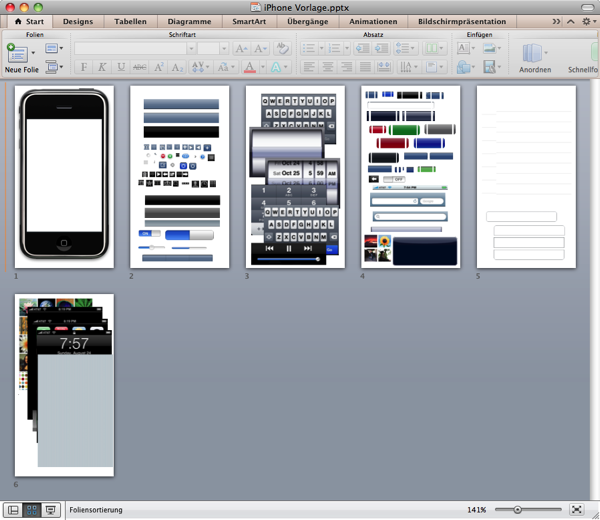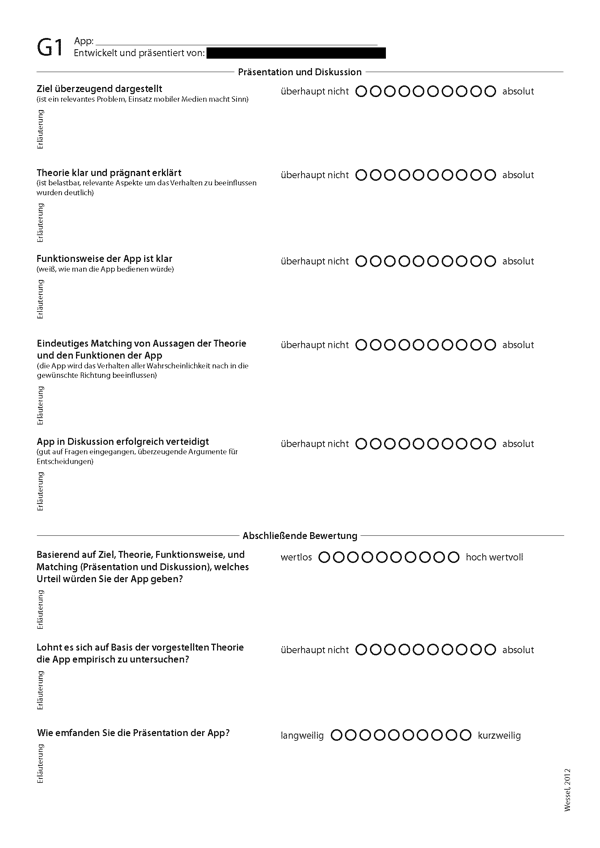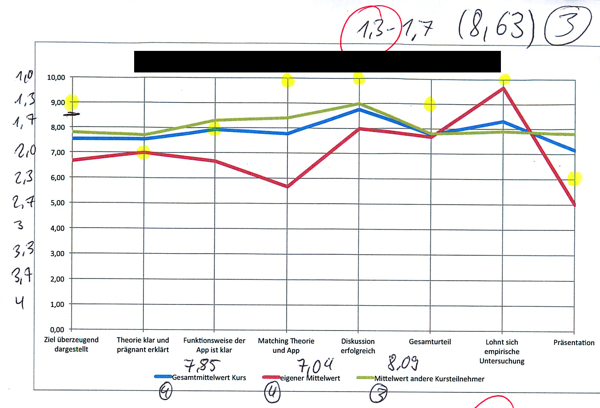“Nothing is as practical as a good theory”
Kurt Lewin
I’m currently doing a course on the evaluative aspects of teaching. While doing part of the required course work, I remembered the kind of assessment I used during the last course I have given. The course was in psychology, about mobile media. The students were asked to design an App based on a psychological theory. Why? For a couple of reasons:
- Psychology is an empirical science that uses theories about human behavior to describe, explain, predict and control human experience and behavior. This makes psychology a very powerful discipline, although it has its limits due to its probabilistic nature — we can never say definitely what a person will do, but only probabilistically.
- Theories are extremely useful, but you have to apply them. This usually requires some creativity. There is rarely a one-size-fits-all theory, but different theories which focus on different aspects. It’s like a toolbox, you have to chose the right theory and apply it.
- Theories are rarely applied while studying psychology. While a few (good) exams will ask students to apply the theories they learned, in many cases mere memorization is enough to pass an exam. Just remembering the different elements of a theory together with the standard examples will get you through most exams. However, the real test whether you have understood something is when you have to apply it to a new case, and you have to apply it when you work as a psychologist. So giving students the opportunity to apply a theory to a concrete problem is a huge learning opportunity.
The concrete task was to work together in a group of three to four students and select a theory (e.g., one the students liked) or look for a problem and select a theory that can be applied to that problem. Then students had to design a computer program that uses this theory to influence human behavior or experience. Given that the course was about mobile media, the task was to develop an App.
Given that it were psychology students, they only had to design the app, using a PowerPoint template that contained the iOS App elements (see picture below).

It was neither required nor desired to actually develop the app. That’s the domain of computer scientists or programmers. What matters was the creative application of a psychological theory, to actually design an App that is founded on more than personal guesswork. After all, that’s what psychology is good at — as a scientific discipline it not only knows that the answer to everything is “it depends”, it also knows what it depends on and knows how to influence these factors.
So, students were asked to design the app and present it in a “psychological sales pitch” — which is a fancy venture capital pitch inspired term for a short presentation that shows:
- The goal of the App (1 minute)
- The theory the app is based on (3 minutes)
- The way the app works (3 minutes)
- How theory and the way the app works match to influence the user (3 minutes)
After this 10 minute presentation the other students and the instructor (me) could ask questions.
Given that the students should get feedback on their performance, each student and the instructor had an evaluation sheet that was used to rate the performance of the students (see image below).

The criteria were:
- Presented the aims of the app in a convincing way
(it addresses a relevant problem, the use of mobile media makes sense; scale of 1 to 10, 1 = not at all, 10 absolutely) - Presented the theory in a clear and concise way
(using strong arguments, relevant aspects to influence the behavior became clear; scale of 1 to 10, 1 = not at all, 10 absolutely) - The way the app works became clear
(knows how one would use the app; scale of 1 to 10, 1 = not at all, 10 absolutely) - Clear matching between theory and the way the app works
(the app will most likely influence the user’s behavior in the desired way) - App was defended successfully in the discussion
(handled the questions well, gave convincing arguments for the decisions that were made; scale of 1 to 10, 1 = not at all, 10 absolutely) - Overall evaluation 1: Based on the goal, the applied theory, the way the app works and the matching between these elements — which overall rating would you give for the app?
(scale of 1 to 10, 1 = worthless, 10 = highly valuable) - Overall evaluation 2: Based on the applied theory, is it worthwhile to do an empirical study whether the app really achieves the predicted effects?(scale of 1 to 10, 1 = not at all, 10 = absolutely)
- Overall evaluation 3: How did you like the presentation of the App?
(scale of 1 to 10, 1 = boring, 10 = diverting)
Students (and the instructor) not only provided quantitative measures that were aggregated (statistical mean), but were also asked to provide written explanation for their judgements. The feedback was provided to the presenting students via email (and only to these students) and used to grade their work. Given that this psychological sales pitch was 1/3 of the overall grade (the other 1/3s being a presentation about a scientific paper and a written exam), the students were highly motivated and delivered exceptional results. See image below:

Another positive aspect of this task was that I could use the app each students helped to design in the final exam. Students got the slides of their psychological sales pitch and were asked to write the method section of a psychological paper, i.e., how would they conduct a study to find out whether the app really works in practice.
This task made the course really fun (for me, and also for many students, see the course evaluation — in German only) and — I hope — useful for the students.
Hmm, I really love teaching … although I won’t do any semi-ghost teachings anymore (where I have to share teaching credits with someone who does zero work). I love teaching too much to ever do this again, but that’s a topic for another posting …